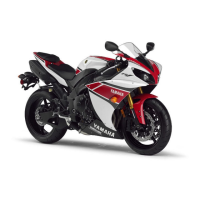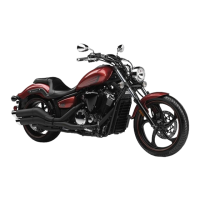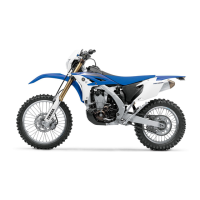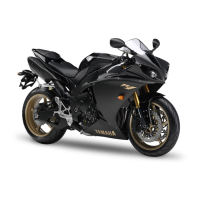PERIODIC MAINTENANCE
3-15
c. Tighten the locknuts “1”.
▲▲▲▲▲▲▲▲▲▲▲▲▲▲▲▲▲▲▲▲▲▲▲▲▲▲▲▲▲▲
EAS14B1088
CHECKING THE BRAKE OPERATION
1. Check:
• Brake operation
Brake not working properly → Check the
brake system.
Refer to “FRONT BRAKE” on page 4-31
and “REAR BRAKE” on page 4-44.
Drive on the dry road, operate the front and
rear brakes separately and check to see if the
brakes are operating properly.
EAS21240
CHECKING THE BRAKE FLUID LEVEL
1. Stand the vehicle on a level surface.
• Place the vehicle on a suitable stand.
• Make sure the vehicle is upright.
2. Check:
• Brake fluid level
Below the minimum level mark “a” → Add
the recommended brake fluid to the
proper level.
EWA13090
• Use only the designated brake fluid.
Other brake fluids may cause the rubber
seals to deteriorate, causing leakage and
poor brake performance.
• Refill with the same type of brake fluid
that is already in the system. Mixing brake
fluids may result in a harmful chemical
reaction, leading to poor brake perfor-
mance.
• When refilling, be careful that water does
not enter the brake fluid reservoir. Water
will significantly lower the boiling point of
the brake fluid and could cause vapor
lock.
ECA13540
Brake fluid may damage painted surfaces
and plastic parts. Therefore, always clean
up any spilt brake fluid immediately.
In order to ensure a correct reading of the
brake fluid level, make sure the top of the
brake fluid reservoir is horizontal.
Recommended fluid
DOT 4
A. Front brake
B. Rear brake
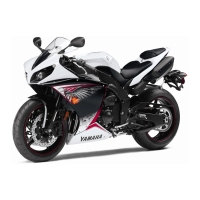
